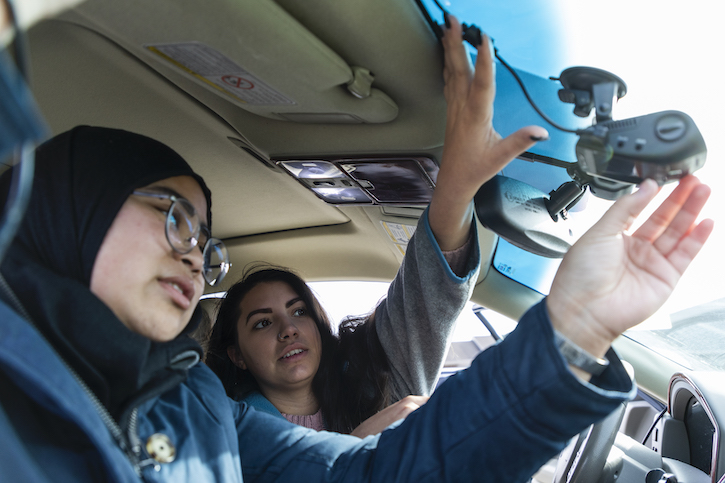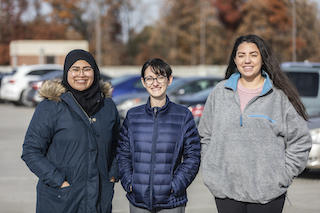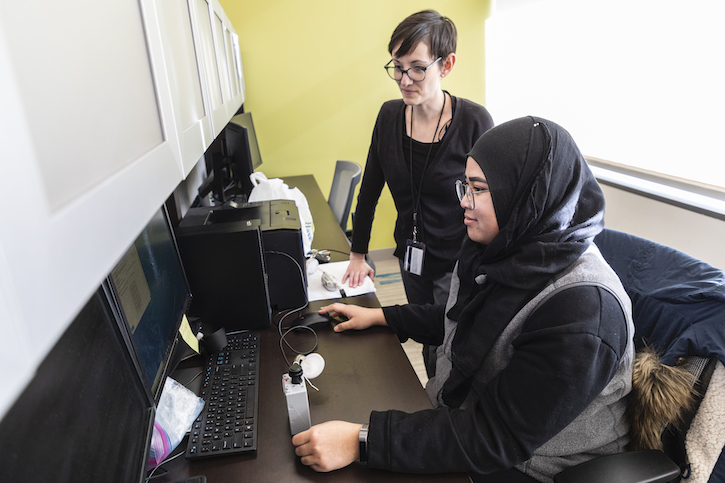The COVID-19 pandemic shifted thousands of jobs online, allowing employees to telework and avoid congested roadways. That’s good for slowing the spread of the virus, but new research from George Mason University also shows such habits could limit people’s exposure to harmful traffic pollution.
“This is one of the first studies to use vehicle monitors paired with air pollution monitors to assess trip exposures,” said Jenna Krall, assistant professor of global and community health. “We found there was higher pollution exposure during rush hour compared to nontrip exposures.”
The study led by Krall that included collaborators from the College of Health and Human Services, the Volgenau School of Engineering, and the College of Humanities and Social Sciences specifically measured women’s exposure to traffic pollution during commutes. Krall said she was inspired to conduct the study by recent research that showed pollution exposure during pregnancy may lead to adverse health outcomes.

When study participants were in the car, their exposure to fine particulate matter (air pollutants that can become a health concern when they enter the body) was higher than when they weren’t driving. The exposure to the pollutants increased even more when they drove during rush hour.
“It is really awesome to be part of one of the first studies that [examined] traffic pollution exposure [for women] during real-world commutes,” said Nada Adibah, a 2019 master of public health graduate who is one of the paper’s authors.
“The findings were interesting and very insightful,” Adibah said, adding that she was surprised to find no differences in pollution concentrations for varying commute lengths.

The data could be used to help inform policy decisions, Krall said, such as implementing telework as a potential solution for women with health risks.
“We need to develop policies that protect public health, this may mean that it is necessary to reduce exposure to traffic-related pollution,” Krall said.
Funded by a Provost’s Multidisciplinary Research Award and a Jeffress Memorial Trust grant, the project provided opportunities for Mason undergraduate and graduate students to be involved in research with real-world impact.
“I am so grateful for this opportunity to work with Dr. Krall and Dr. [Anna] Pollack,” said Karlin Moore, a May 2020 chemistry graduate from the Honors College.
Moore said she helped analyze data from the air pollution monitors, determining ratios and concentrations of individual pollutants.
“It was interesting seeing a different area of STEM,” Moore said. “Getting exposure and experience to biostatistics and epidemiology opened my eyes to a whole plethora of different fields and careers that help public health.”
Moving forward, Krall said Mason researchers will take a deeper dive into the collected data and conduct further analysis.
“One goal is to develop new statistical approaches for estimating how we’re exposed to traffic pollution,” Krall said. “Hopefully this presents a new way for us to move forward with collecting better information to understand pollution exposure during commutes.”

